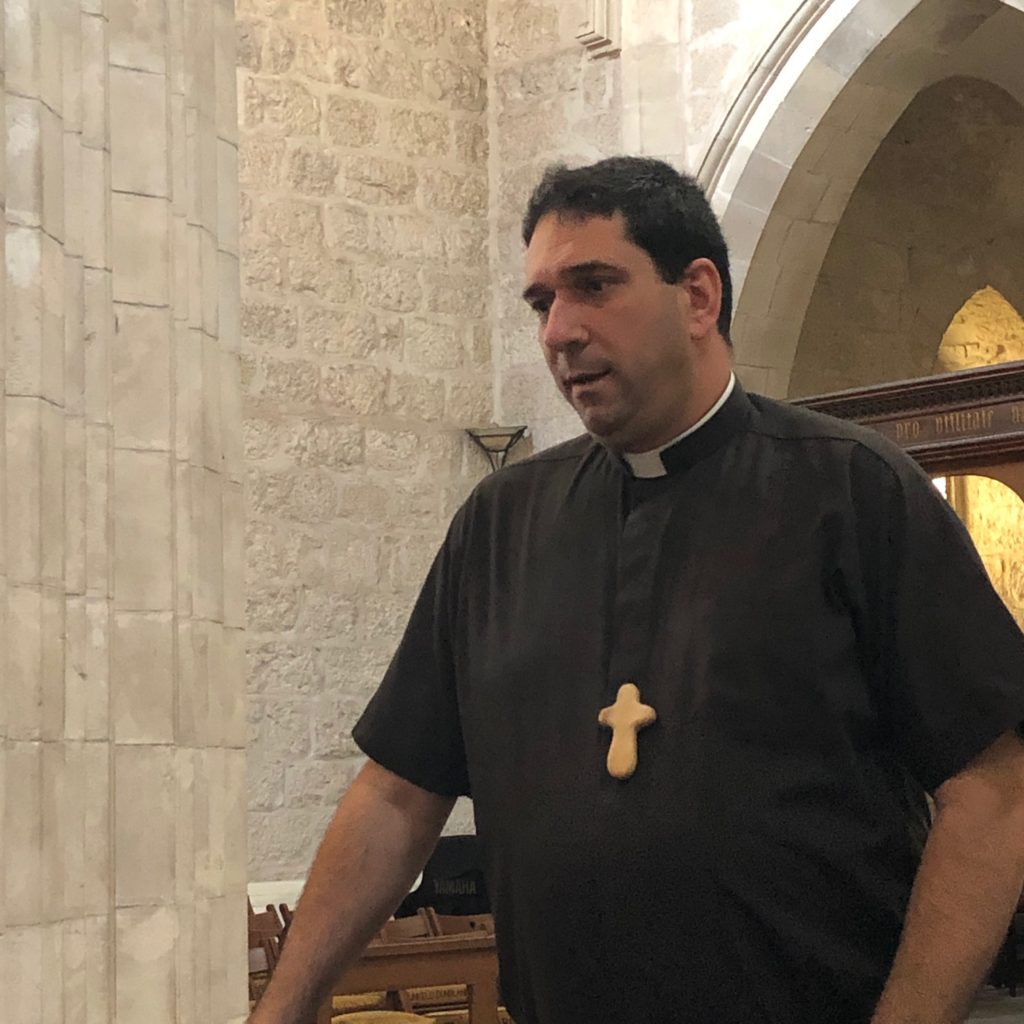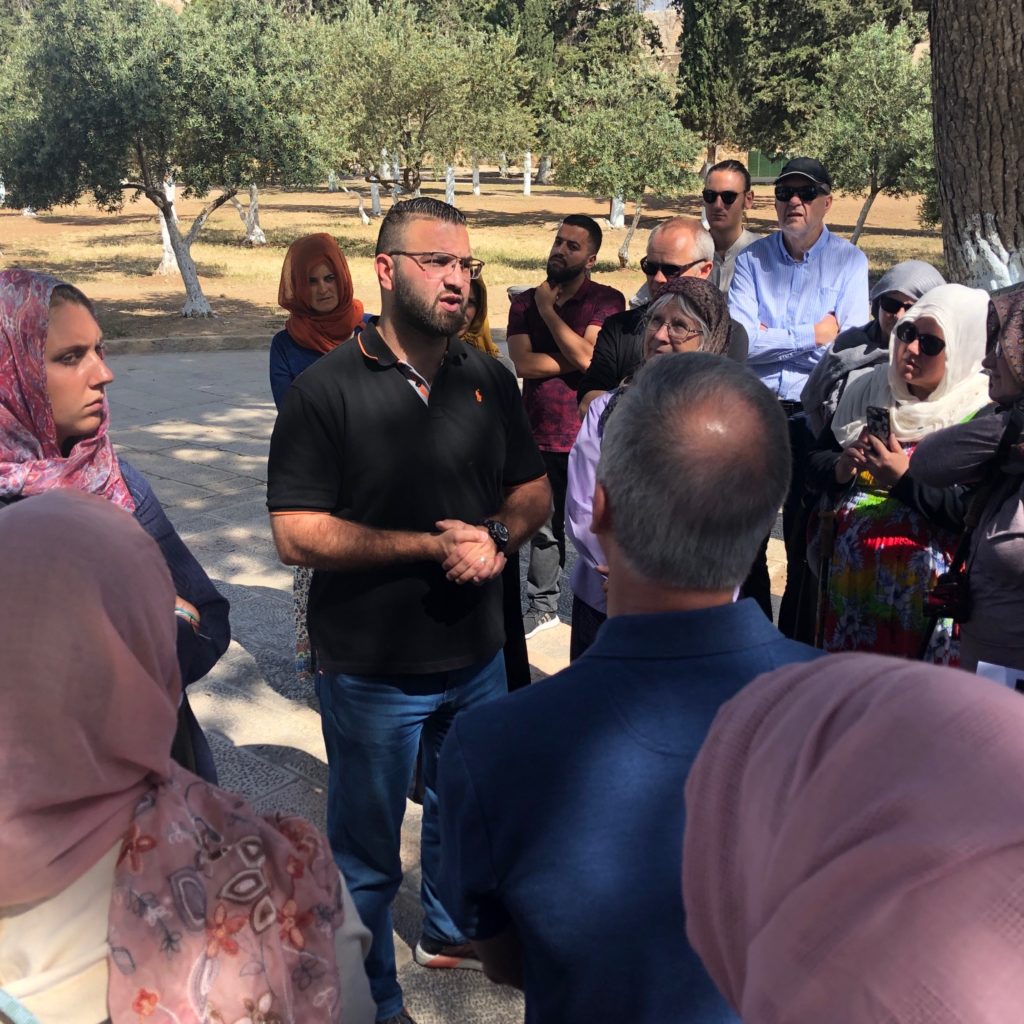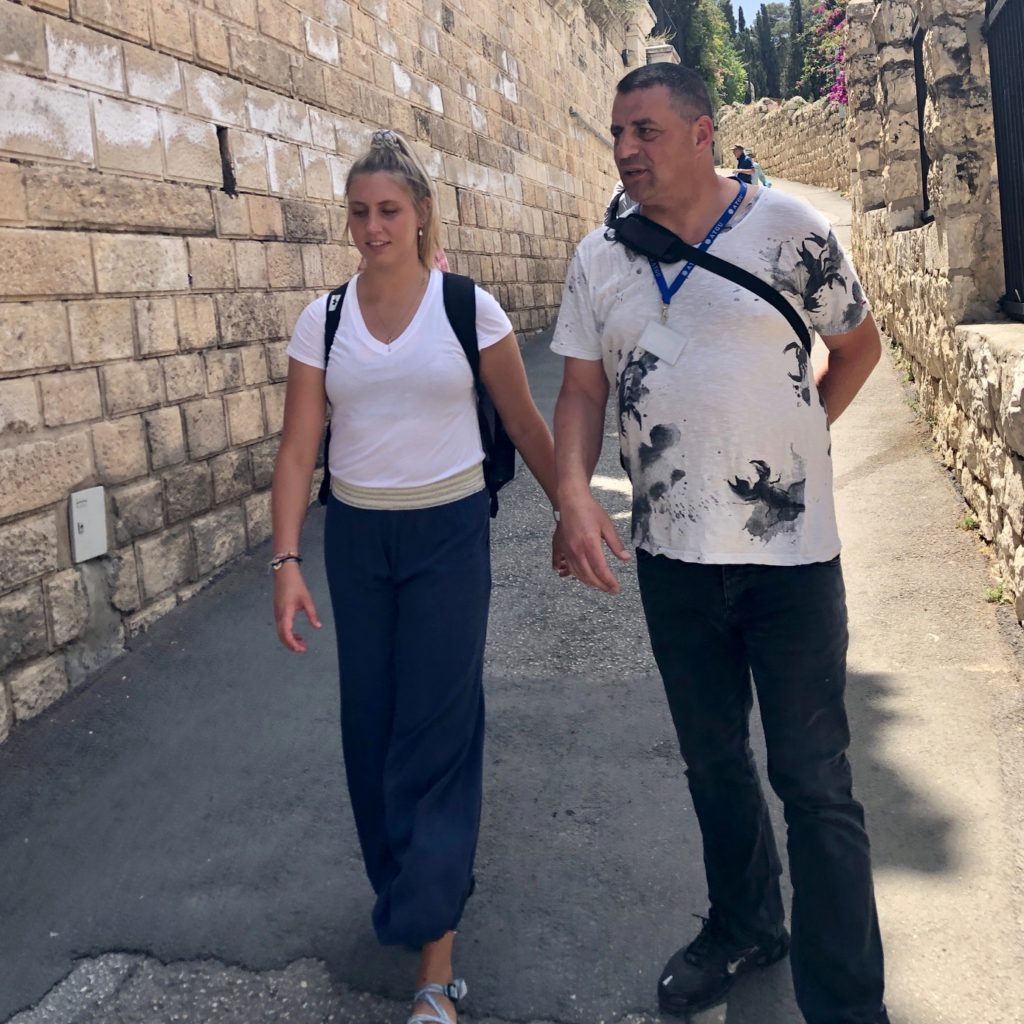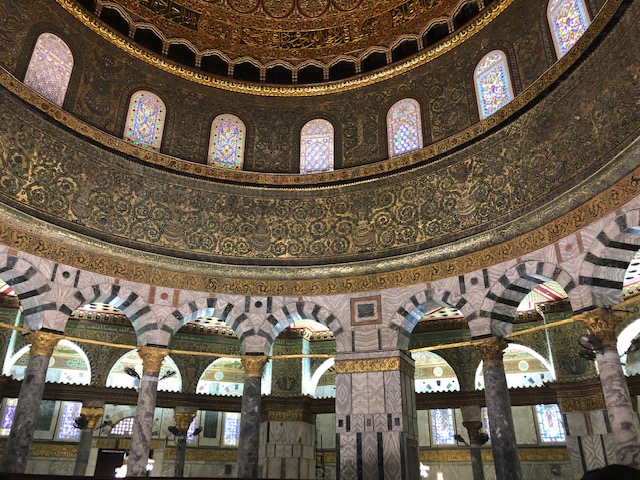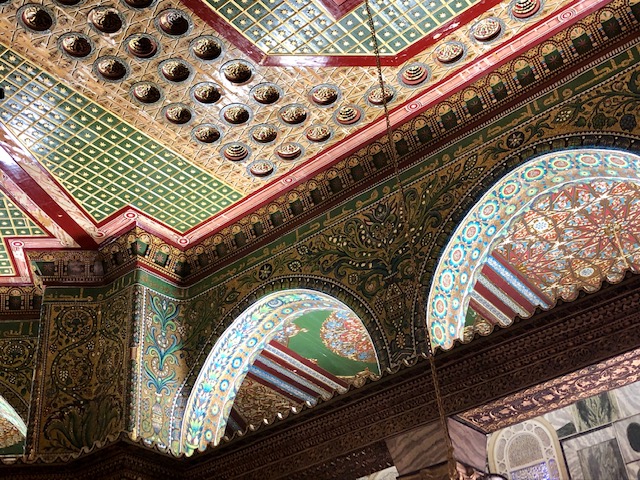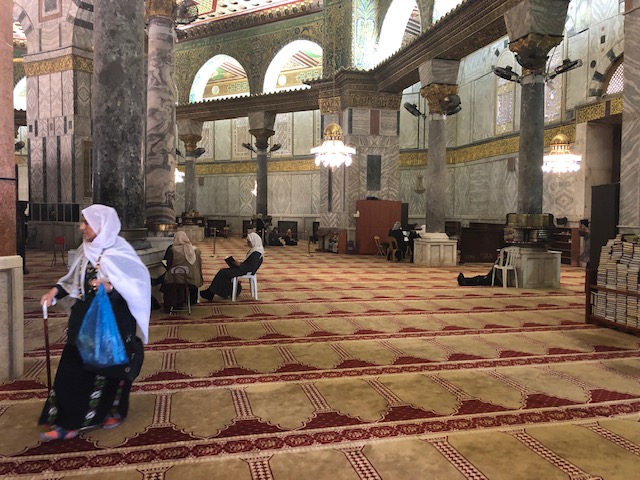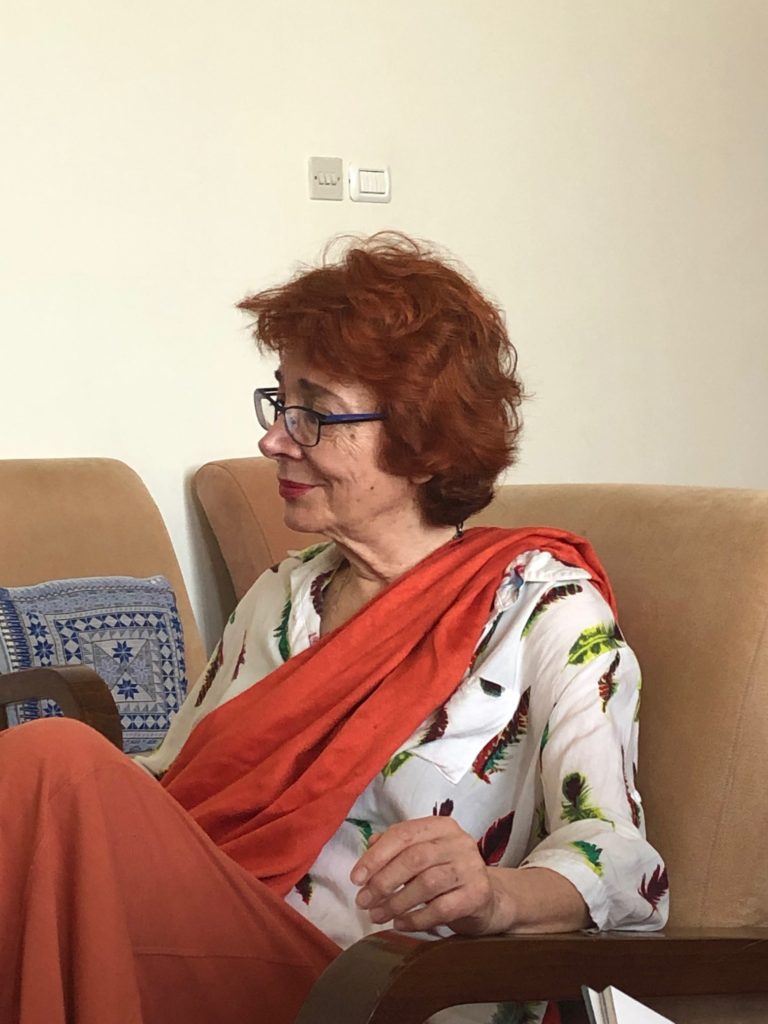Thursday, May 23
~ By Peggy Gish
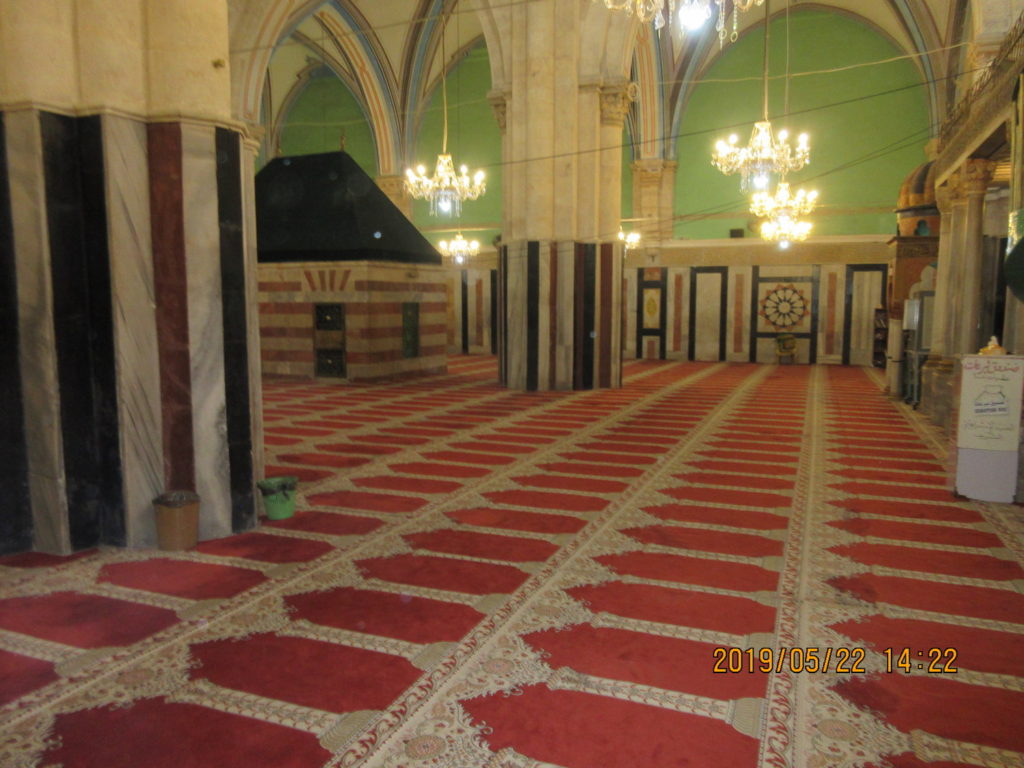
Ibrahimi Mosque 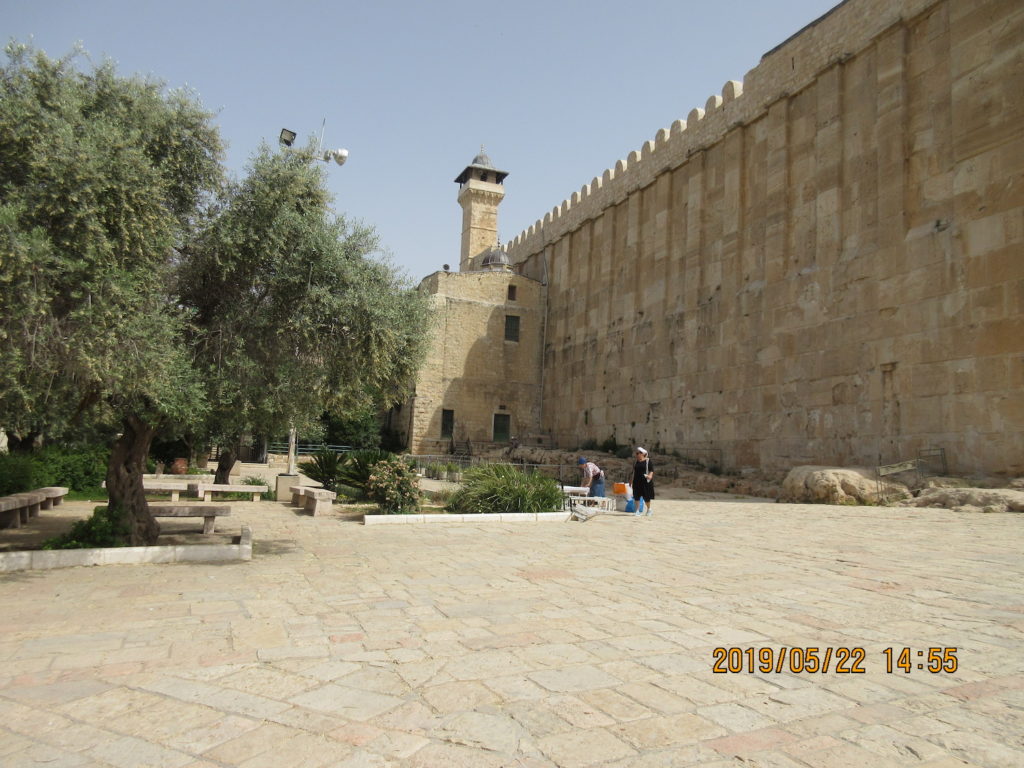
Synagogue side of the Tomb of the Patriarchs
We stood in the large prayer room in the Ibrahimi Mosque, built on the site of the Tomb of the Patriarchs, in the city of Hebron in the southern part of the West Bank. Our guide pointed to a certain area where, until recent times, Muslims prayed in front of that line and the Jews living in Hebron prayed in the area behind them. Things dramatically changed after some of the more extremist Israeli settlers took over a hotel in the old city of Hebron after the 1967 War and established their presence. Israeli soldiers were sent in to protect these settlers. It became increasingly tense after February 1994, when Baruch Goldstein, a settler, originally from the US, shot into the group of Muslims praying there and killed 29, and injured around 100. The mosque was then divided by a wall separating Muslim and Jewish sections. Israel punished the Palestinian citizens of Hebron with more Israeli check points and closures in the old city and daily harassment, so that Hebron is considered the most violent and restricted Palestinian city in the West Bank.
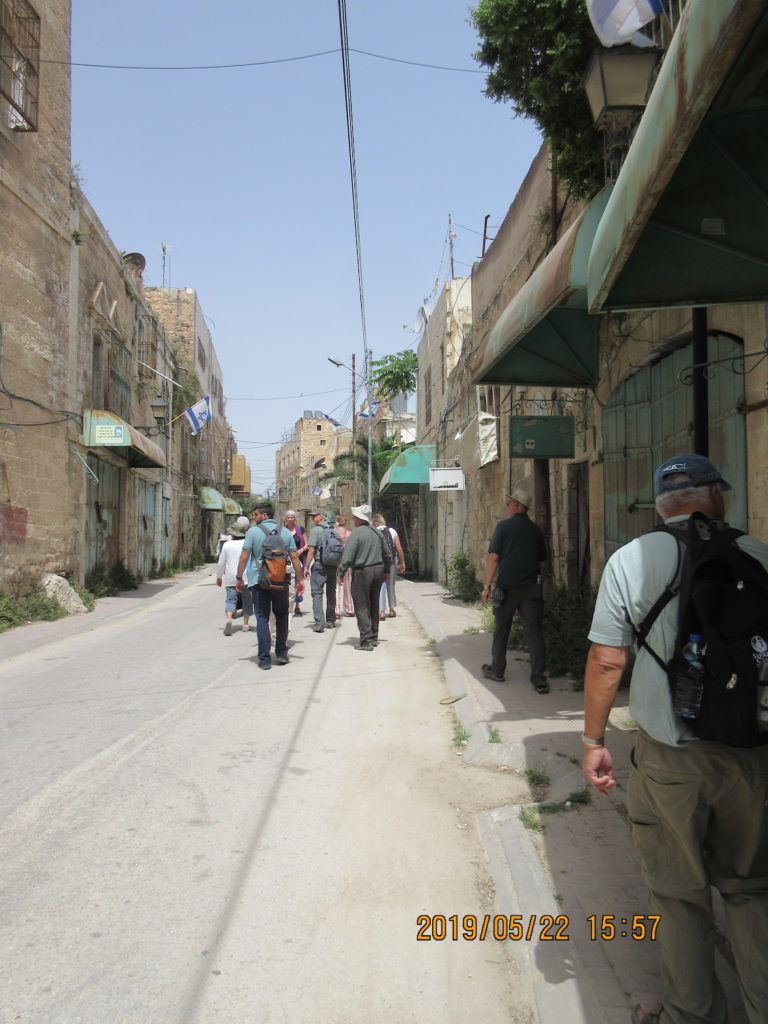
This felt real as our group walked down a mostly empty Shuhada Street, the main city street that Palestinians aren’t allowed to be on, and our Palestinian guide was not allowed to walk with us. Along the street we saw the welded-shut doors of the shop that Palestinian owners can no longer access. It was different from other areas of the city, where people were busy shopping and we felt welcomed and quite safe.
Because of this situation in the old part of the city, four nonviolent international groups have been working there accompanying local Palestinians in order to reduce their daily harassment, and monitoring and reporting on the violence and human rights abuses. They are the Christian Peacemaker Teams (CPT), Temporary International Presence in Hebron (TIPH), Ecumenical Accompaniment Presence in Palestine Israel (EAPPI), and International Solidarity Movement (ISM). They work along-side several local organizations working nonviolently to resist the injustices.
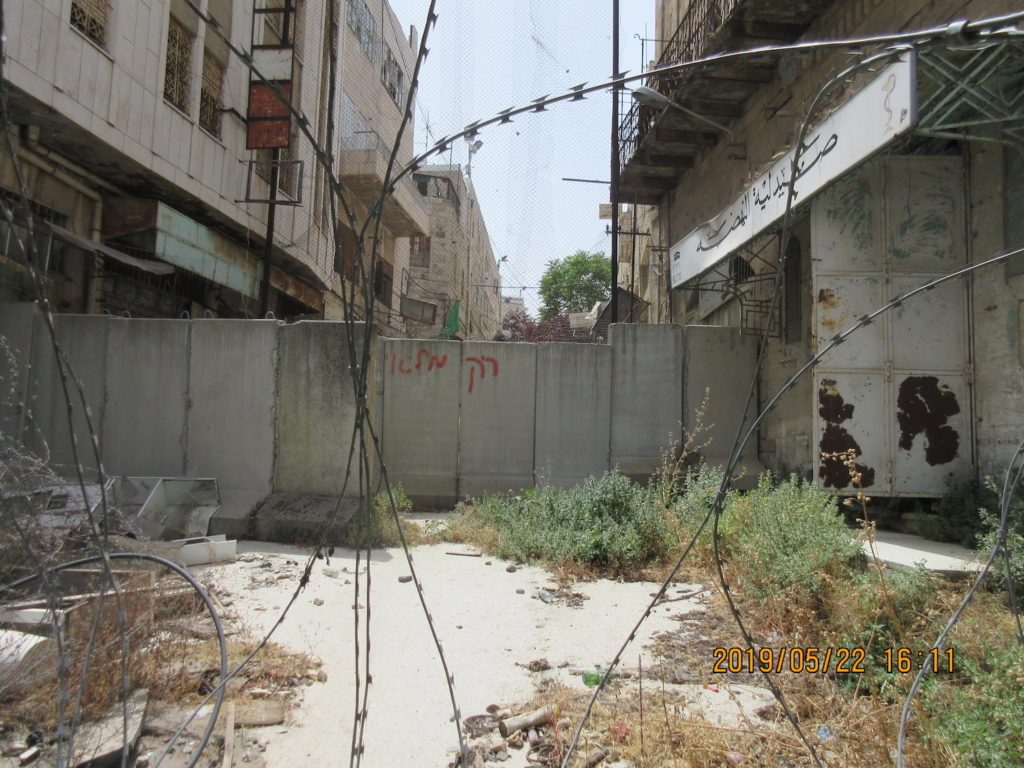
For me, it felt like coming home, since I had worked here with CPT several times between 2002 and 2007, and my late husband, Art, had worked there every winter for 15 years. It brought back memories of accompanying school children and speaking up for them at checkpoints they need to go through, and trying to prevent them from being harassed or hurt by settlers or soldiers. I remember working in villages south of the city, accompanying shepherds simply taking their flocks out on their own land, and encountering settlers coming to beat on them or their sheep and goats. A particularly powerful time took place when I was helping out in the barley harvest in the fields outside the village of Jinba. When two jeep loads of Israeli soldiers stopped at the edge of the road, a Palestinian woman and I walked out and greeted them in a friendly way, inviting them to join us—thus diffusing the possibility of their harassing or preventing the villagers from harvesting. Today, I still weep for the people who are the brunt of this systemic and overt violence.
As our tour group gathered to reflect at the end of the day, we shared ways in which we saw or experienced God at work in this visit. We mentioned the people working for justice and caring for their fellow brother and sister, regardless of religion or ethnic group, in the way that I believe Jesus had done and has called us to. But we also saw God at work in us, opening our hearts to deeply care and feel angry at the injustice causing tremendous the pain for the people—but angry in a way that compels us to speak out the truth smacking us in the face here, and work for some kind of peaceful and just change as we return home.

